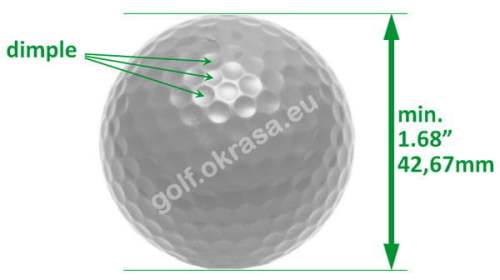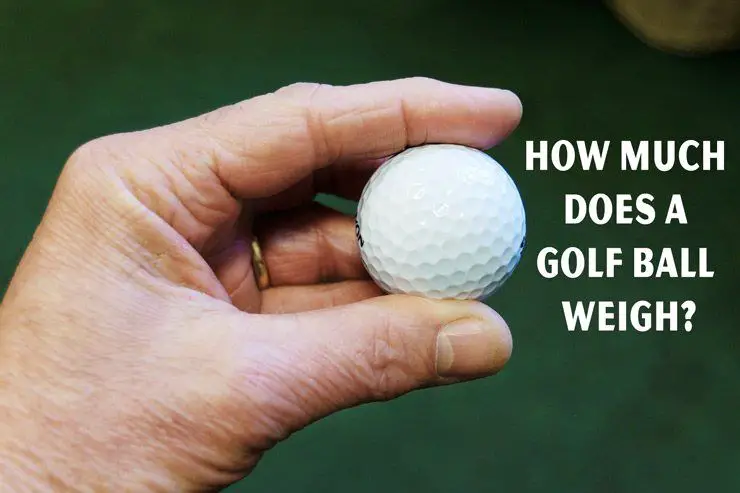From Dimples to Diameter: How Big Is a Golf Ball Really?
Golf, a sport that dates back centuries, is not just about swinging clubs and putting balls. The golf ball itself, a seemingly small and straightforward component of the game, has an intriguing history and a significant impact on gameplay. In this article, we delve into the dimensions, history, importance, and various aspects of golf ball size, shedding light on its role in the sport.

Golf, often described as a game of precision and finesse, relies heavily on the equipment used, and perhaps no piece of equipment is as fundamental as the golf ball itself. From its humble origins to the meticulously engineered spheres we see today, golf balls have undergone a fascinating evolution. In this article, we delve into the intricacies of golf ball size, exploring everything from its dimples to its diameter.
The Standard Size of a Golf Ball
The standard golf ball size is a critical aspect of the game, defined by specific dimensions set forth by governing bodies such as the United States Golf Association (USGA) and the Royal and Ancient Golf Club of St Andrews (R&A). Typically, a standard golf ball has a diameter of 1.68 inches (42.67 millimeters) and weighs approximately 1.62 ounces (45.93 grams).

The History of Golf Ball Size
The size of golf balls has evolved significantly throughout history. Initially, golf balls were crafted from wood, which often resulted in irregular sizes and shapes. However, with advancements in technology and materials, particularly during the transition to the gutta-percha era in the mid-19th century, standardized sizes began to emerge.
The Importance of Golf Ball Size
The size of a golf ball plays a crucial role in the game’s dynamics. A standardized size ensures fair play and consistency across courses worldwide. It affects factors such as aerodynamics, distance, and control, ultimately influencing the player’s performance and overall experience on the course.
Variations in Golf Ball Size
While the standard size is predominant in golf, variations exist to serve specific purposes. For instance, practice or novelty golf balls may deviate from the standard dimensions, offering unique characteristics or designs for recreational use.
Golf Ball Size vs. Golf Hole Size
The relationship between golf ball size and hole size is fundamental to the challenge of the game. The golf ball must fit within the diameter of the hole, adding complexity to putting and emphasizing precision in gameplay.

Golf Ball Material and Construction
Modern golf balls are constructed using various materials, including synthetic compounds, rubber, and thermoplastics. The manufacturing process involves intricate design and engineering to optimize performance in terms of distance, spin, and durability.
Golf Ball Dimples and Their Role
The dimples on a golf ball may seem insignificant, but they play a crucial role in its aerodynamics. Dimples reduce drag and enhance lift, allowing the ball to achieve greater distance and accuracy when struck.
Golf Ball Weight and Its Impact on the Game
In addition to size, the weight of a golf ball influences its flight characteristics. Heavier balls may provide more control but sacrifice distance, while lighter balls may travel farther but offer less precision.

Choosing the Right Golf Ball for Your Game
Selecting the appropriate golf ball involves considering various factors, including skill level, swing speed, and playing conditions. With numerous options available on the market, finding the right balance of distance, spin, and feel is essential for optimizing performance.
FAQs
Does the size of a golf ball affect its performance?
Yes, the size of a golf ball significantly impacts its aerodynamics, distance, and control on the course.
Are there variations in golf ball size for different types of play?
While the standard size is prevalent, there are variations in size for novelty or specialty golf balls.
Why do golf balls have dimples?
Dimples on golf balls reduce drag and enhance lift, allowing for greater distance and accuracy when struck.
How do I choose the right golf ball for my game?
Consider factors such as skill level, swing speed, and playing conditions when selecting a golf ball.
What is the significance of the weight of a golf ball?
The weight of a golf ball influences its flight characteristics, with heavier balls offering more control and lighter balls providing greater distance.
Conclusion
The size of a golf ball, from its dimples to its diameter, is a critical element that shapes the sport of golf. Understanding the standards, history, and nuances of golf ball size enhances appreciation for the game and aids players in making informed decisions about equipment and strategy.
The size of a golf ball may seem like a trivial detail, but its impact on the game is significant. From the aerodynamic benefits of dimples to the precision engineering behind its standard dimensions, every aspect of a golf ball’s size contributes to the player’s experience on the course. By understanding the nuances of golf ball size, players can make informed decisions and maximize their performance on the green.






